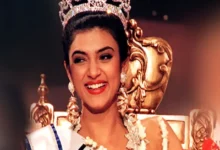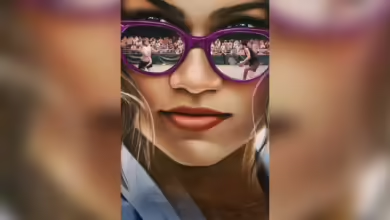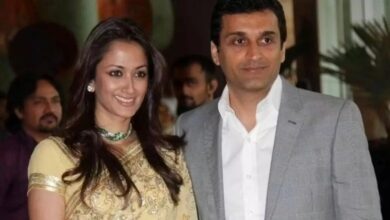Review of “Uncropped”: James Hamilton’s alluring portrait has you wondering: Is he the greatest New York photographer of all time
Photographers who capture the vibrant, unfiltered, bustling carnival of New York City, with its shops, buildings, skyscrapers, alleys, celebrities, and infinite array of human beings, are already at an artistic advantage. What he or she does with it, however, is the other leg. Weegee captured the sinister, criminal nighttime environment on camera. Diane Arbus revealed the humanity of the secret freak show. William Klein and Alfred Eisenstaedt captured the hustle and bustle of daily life. However, after seeing “Uncropped,” an engrossing look at the life and career of magazine and newspaper photographer James Hamilton, you could come to the conclusion that he is the best New York photographer ever.

Throughout the program, hundreds of Hamilton’s black-and-white photos are shown. Each one has a polished tactility and an unforced psychology that allow them to each convey a tale. In addition to being stunning gallery images, the photos are an example of New Journalism. Like Katherine Dobie, his life partner, he also showed us oddities and turned his photos of the famous into interactions, capturing what she refers to as “the choreography of street life.”
That expression is excellent since it implies a structure, a kind of orchestration; yet, street life is obviously not choreographed by anybody. The “dance,” as it were, unfolds naturally and subconsciously. Along the urban jungle’s walkways, human civilization is arranging itself, and Hamilton’s photos reveal that order lurks behind the chaos. In the 1970s and 1980s, Sylvia Plachy, a fellow staff photographer at the Village Voice, referred to Hamilton as a “classicist.” He readily admits to being fixated with composition and lighting that evokes sources as stylized as the film noirs he grew up watching. However, Hamilton’s shots never have anything stagy about them. They’re marvels of impromptu classicism, as if he captured a fleeting moment and immortalized it. It’s a kind of creative sorcery that allows him to build compositions around existential themes.
Essentially, what I’m trying to convey is that James Hamilton is a photographer who, like Weegee, Arbus, or Annie Liebovitz, could have and could have achieved far greater fame. However, “Uncropped,” which was directed and edited by D.W. Young, is fascinating in part because it demonstrates how differently Hamilton handled his career. He was very successful, working as a staff writer for Harper’s Bazaar and the Voice (at a time when the Voice was the city’s closest thing to a journalistic heartbeat), creating magazine covers for New York, and documenting the glamorous party scene, which he captured with a devious unmasking. He filmed stories for the Voice, such as the one in which he and writer Michael Daly spent days infiltrated with the Homicides, a Coney Island street gang that lived up to its moniker. There was nothing James Hamilton couldn’t, wouldn’t, or wouldn’t do when it came to taking chances.
However, 1946-born Hamilton is that uncommon individual—a lifetime nomad. In the documentary, he is seen strolling about Washington Square Park in the present day, always carrying a camera. He has a big build, a shock of white hair, and a voice that is surprisingly soothing and velvety. He expresses his longing for the analog era, when one had to enter the darkroom to find out what they had captured on film. Hamilton still lives in the darkish, cozy-in-a-beatnik-rat-trap-way apartment on University Place that he moved into with two friends in the summer of 1966 (the rent was $109). He constructed a darkroom into the kitchen, which was just large enough to accommodate a kitchen. He was a magazine photographer, so he handled his own processing and printing there. He insisted that the photos be entered exactly as he had framed them—that is, without any cropping. Because of his exceptional skill, his editors let him to draft his own ticket.
Hamilton hitchhiked across the country for several months in 1969, taking hundreds of rolls of film (the images from that trip have a rawhide vibrance reminiscent of Larry Clark). He eventually crashed the Texas Pop Festival, faking a press badge to get a front-row seat to take photos of B.B. King, Janis Joplin, and Johnny Winter. This resulted in his first job, a two-year assignment (1969–71) as a staff photographer for the publication Crawdaddy. He was having so much fun. The rock stars all lodged at the Chelsea or the Albert Hotel, which was located across the street from the newspaper’s headquarters. Hamilton almost lived backstage at the Fillmore, where he captured a million pictures in hotel rooms.
His images of the music industry are vibrantly alive. “Uncropped” transports us to a time before publicists, when a photographer like James Hamilton could show you behind-the-scenes photos or spend hours in a hotel room capturing Duane Allman’s irreverent hedonism or Alfred Hitchcock, who would give him a smile that would never appear in another Hitchcock picture. Not coincidentally, he also saw the punk movement.
As we can see, Hamilton was something of a purist without coming off as irritating. He was very attractive in his prime, like a tousled-haired Tim Robbins with a sly smile on his face, and rumors circulated that he was the object of desire for everyone at the Voice. That is the type of aura that is impossible to purchase when combined with skill. However, Hamilton was too cool to be a player since he kept a distance from everyone. With a little camera and a single flash on top of the camera, he traveled light and never warmed up to authority. He lived every day for his photos. (To get famous, you have to do some of it.)
When Hamilton was younger, his mother demanded that he stay home from school so he could watch “Citizen Kane” on TV, and his aunt brought him to see “Psycho” the day it debuted. He was engrossed in movies, and both other photographers and the movies had an impact on his photography. That’s part of what made him the best biographer of the gritty, nasty, sleazy New York of the 1970s and 1980s—a New York that everyone today claims they miss.
He flourished at the Voice while Clay Felker was its owner. Together, they became close to filmmaker George A. Romero, with whom he worked as an on-set photographer for his films “Knightriders” and “Creepshow,” where they befriended Hal Holbrook and would sneak out to fly ultralight gliders above Pittsburgh. He then returned to the Voice, where he and Joe Conason had sneaked into a Beijing morgue in 1989 to take images of the bodies of demonstrators who had been shot by the Chinese authorities after Tiananmen Square. This was potentially fatal, hair-raising stuff.
The blows did not stop. He took pictures for New York magazine of David Dinkins, Rudolph Guiliani, Robert Altman, and Boo Radley (the latter reminded him of Boo Radley). It was said that Dinkins won the mayoral race because to his empathetic photo of Altman. He filmed Robert Chambers, the self-styled “preppie killer,” with his camera lens peering into Chambers’ deranged psyche. Later, the London Sunday Times Magazine assigned him to cover the Ethiopian conflict. He drove gasoline tankers across landmine-filled highways for months while there, and at one point, Migs fired missiles at him.
The James Hamilton in “Uncropped” is an artist-journalist who takes his profession considerably more seriously than he does. He is a courageous guy of endearing humility. He ended his active career after being struck by a vehicle in Brooklyn Heights, resulting in a leg injury that needed four operations. He and Katherine Dobie own a beautiful property in the Hamptons. However, he is the exclusive owner of all of his own photos (he has mountains of contact sheets), only publishing a small portion of them in books. “Uncropped” is the documentary that honors him appropriately, yet after seeing it, I couldn’t help but feel that he still deserves more. The movie makes you want to spread Hamilton’s art around the globe because it hooks you so deeply.






